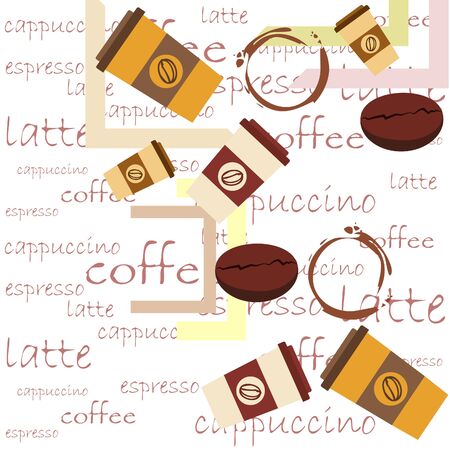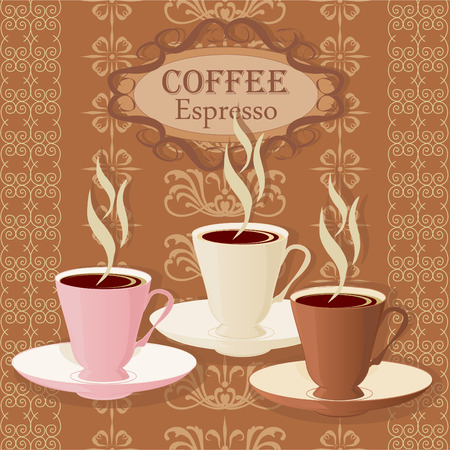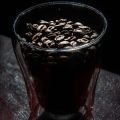Origins of the Espresso Martini
The Espresso Martini, now a staple in Britain’s modern cocktail repertoire, finds its roots in the vibrant nightlife and cultural dynamism of 1980s London. At this time, the capital was undergoing a dramatic transformation—emerging from economic hardship into an era marked by bold fashion, innovative music scenes, and a burgeoning café culture. The city’s bars became playgrounds for creativity and experimentation, with bartenders striving to capture the spirit of the times in every glass. It was within this energetic context that renowned bartender Dick Bradsell invented what would become the Espresso Martini. Legend has it that Bradsell crafted the drink at Soho Brasserie when a customer requested something that would “wake me up, and then mess me up.” Combining vodka, freshly brewed espresso, coffee liqueur, and sugar syrup, Bradsell forged an iconic blend that reflected both the pace and sophistication of London life. The cocktail’s inception was not only a nod to the city’s growing love for coffee but also a testament to its appetite for innovation and indulgence—a classic born from the synergy between British ingenuity and cosmopolitan flair.
2. The Evolution of a Cocktail Icon
The Espresso Martini’s journey from an obscure bar order to a celebrated British classic is a testament to the UK’s dynamic cocktail culture and evolving palates. Born in the 1980s, this cocktail was initially regarded as a niche curiosity—a potent blend of coffee and vodka that catered primarily to London’s late-night crowd seeking both sophistication and stimulation.
Over the years, its reputation grew beyond mere novelty. Spearheaded by innovative bartenders and the rise of third-wave coffee culture, the Espresso Martini began appearing on menus across Britain. Its unique fusion of rich espresso and spirited vodka resonated with Brits appreciation for both tradition and innovation, giving it an edge over more conventional cocktails. As premium coffee became mainstream and consumers demanded higher-quality ingredients, bars responded by refining their recipes—swapping instant coffee for freshly extracted espresso and experimenting with artisanal liqueurs.
Key Milestones in the Espresso Martini’s UK Evolution
| Era | Development | Cultural Impact |
|---|---|---|
| 1980s | Originated in London; niche status among select bars | Urban curiosity; associated with late-night energy |
| 1990s-2000s | Spread to mainstream cocktail lists; recipe refinements begin | Recognised as a symbol of modern indulgence |
| 2010s-Present | Integration of speciality coffee and craft spirits; nationwide popularity | Became a staple at British pubs, weddings, and brunches |
The Modern-Day Staple
The Espresso Martini is now firmly embedded in British drinking culture. Whether ordered at a trendy Soho bar or served at a rural gastropub, it has transcended its origins to become synonymous with contemporary British hospitality. Its enduring appeal lies not only in its bold flavour profile but also in its adaptability—bartenders across the UK continue to experiment with local roasters, flavoured syrups, and even sustainable coffee practices, ensuring the drink remains relevant for new generations.

3. The Perfect Pour: Ingredients and Technique
The hallmark of a true British Espresso Martini lies in its unwavering commitment to quality and precision. Unlike its global counterparts, the British approach celebrates both tradition and innovation, ensuring every glass is a harmonious blend of robust flavour and refined technique.
Ingredient Selection: A Local Touch
Britons are discerning about their spirits, with premium vodka taking centre stage—often favouring homegrown brands or those with sustainable credentials. The coffee liqueur must be rich yet balanced; Kahlúa remains a classic, but many bartenders opt for artisanal alternatives from UK distilleries, seeking depth and complexity. For sweetening, British bartenders commonly use simple syrup made from unrefined sugars, lending a subtle caramel note that complements the espresso’s intensity.
Espresso Quality: The Heartbeat of the Cocktail
No Espresso Martini can claim British pedigree without exceptional espresso. Leading venues insist on freshly pulled shots from specialty roasters—often single-origin beans sourced with ethical transparency. The espresso should be full-bodied with vibrant acidity, forming a thick crema that translates into the signature frothy top. Many establishments in London and beyond pride themselves on using locally roasted beans, reflecting the UK’s flourishing coffee culture.
Mixing Technique: Precision Meets Theatre
The mixing process is as much about showmanship as it is about science. Bartenders chill their martini glasses in advance—a nod to British fastidiousness—and add all ingredients to a shaker filled with cubed ice. Vigorous shaking is essential; this not only chills the mixture but also aerates it, resulting in that iconic foam cap. The pour itself is executed with care, straining into the glass in one smooth motion. Finally, three coffee beans are floated atop—a time-honoured garnish symbolising health, wealth, and happiness.
Attention to Detail Sets It Apart
It’s this meticulous attention to ingredient provenance, espresso excellence, and flawless execution that elevates the British Espresso Martini above mere trend status. Here, every element is scrutinised and perfected—the mark of a modern classic cherished across the UK’s vibrant cocktail scene.
Café Culture and British Nightlife
In recent decades, the United Kingdom has experienced a remarkable evolution in its café culture, blending seamlessly with the vibrancy of its nightlife. The Espresso Martini stands at the very heart of this intersection—a symbol of modern British socialising where coffee appreciation meets cocktail sophistication. This fusion is not accidental; it is deeply rooted in the British penchant for both conviviality and caffeine-driven rituals.
Across Britain’s major cities, from London’s bustling Soho to Manchester’s Northern Quarter, independent coffee shops have become cultural hubs by day and social spaces by night. As Britons developed a taste for specialty coffee and artisanal roasts, this passion naturally extended into evening pursuits. The Espresso Martini became a staple offering, perfectly bridging the gap between after-dinner drinks and late-night energy boosts.
The unique appeal of the Espresso Martini lies in its ability to cater to both daytime and nocturnal habits. While traditional British pub culture remains strong, the rise of café bars—hybrids that serve high-quality coffee alongside cocktails—has redefined how people unwind and connect. These venues often offer an extensive Espresso Martini menu, showcasing variations that highlight local spirits or single-origin espresso shots.
| Daytime Café Scene | Nightlife Integration |
|---|---|
| Artisan coffee focus | Coffee-infused cocktails |
| Community gathering spots | Late-night social hubs |
| Barista craftsmanship | Bartender innovation |
| Relaxed atmosphere | Energetic vibe |
This synergy has fuelled the lasting popularity of the Espresso Martini within British drinking culture. It is now common to find this cocktail featured not only in high-end bars but also in neighbourhood cafés that transform their menus as the sun sets. The drink’s dual identity—part pick-me-up, part indulgence—mirrors the rhythm of British urban life, making it an enduring modern classic that continues to evolve with local tastes and trends.
5. Contemporary Twists and Innovations
The Espresso Martini has evolved far beyond its original incarnation, with modern British bartenders embracing innovation to create new expressions of this beloved classic. In cocktail bars across London, Manchester, and Edinburgh, the drink is continually reimagined, reflecting both local tastes and the spirit of experimentation that characterises Britain’s contemporary drinks scene. Many establishments now use locally roasted speciality coffee beans, sometimes cold brewed for a smoother finish or even nitro-infused for an extra layer of texture and crema.
One notable trend is the incorporation of seasonal or artisanal ingredients native to the UK. For example, bartenders are infusing their vodka bases with British botanicals such as heather, elderflower, or rhubarb, lending a distinctly regional flair. Some venues offer a “British Heritage” Espresso Martini, featuring English distilled spirits or house-made coffee liqueurs crafted from single-origin beans roasted in local micro-roasteries. These nuanced takes highlight the UK’s vibrant craft spirits industry while paying homage to the cocktail’s roots.
Texture and garnish have also become areas for creative expression. Modern versions might be topped with chocolate shavings from renowned British chocolatiers or adorned with a dusting of Cornish sea salt flakes for a sweet-savoury interplay. Others experiment with alternative sweeteners—such as honey harvested from urban London rooftops or caramel syrups made from Scottish tablet—to complement the coffee’s natural bitterness.
For those seeking lighter or non-alcoholic options, “no and low” adaptations are increasingly popular. Bartenders are substituting alcohol-free spirits and fortified coffee extracts to ensure everyone can enjoy the essence of an Espresso Martini without compromise.
This inventive approach ensures that while the Espresso Martini remains true to its energising core, it is constantly revitalised by British creativity. The result is a cocktail that not only stands as a modern classic but also serves as a dynamic canvas for the UK’s ever-evolving palate.
6. The Espresso Martini’s Legacy in the UK
Few contemporary cocktails have left as indelible a mark on British drinking culture as the Espresso Martini. Its ascent from a niche, late-night curiosity to an essential fixture behind bars across the UK speaks volumes about its cultural resonance. More than just a fashionable tipple, the Espresso Martini has come to symbolise a broader evolution in British tastes—one that values both craft and convenience, indulgence and innovation.
The Social Ritual of Coffee Cocktails
For many Britons, the ritual of ordering an Espresso Martini is as much about social signalling as it is about flavour. Whether sipped at a bustling Soho bar or featured at an intimate gathering, it denotes sophistication and cosmopolitan flair. This cocktail bridges two beloved national pastimes: coffee culture and after-work drinks. In doing so, it has helped redefine what it means to enjoy a night out, fostering a new appreciation for coffee-based libations among a generation of discerning drinkers.
A Catalyst for Modern Mixology
The legacy of the Espresso Martini extends beyond its own glass. Its popularity has inspired bartenders throughout Britain to experiment with coffee and spirits, spawning an array of creative riffs and innovative serves. From nitro-charged espresso concoctions to locally roasted bean infusions, its influence can be seen in both high-end cocktail lounges and neighbourhood pubs embracing third-wave coffee trends.
An Enduring Icon
As trends ebb and flow within the UK’s dynamic bar scene, the Espresso Martini remains steadfast—a testament to its broad appeal and adaptability. Its enduring presence on menus from London to Edinburgh underscores its status as a modern classic. Ultimately, the drink’s legacy lies not just in its flavour profile but in its ability to bring people together, spark conversation, and celebrate the best of contemporary British hospitality.


